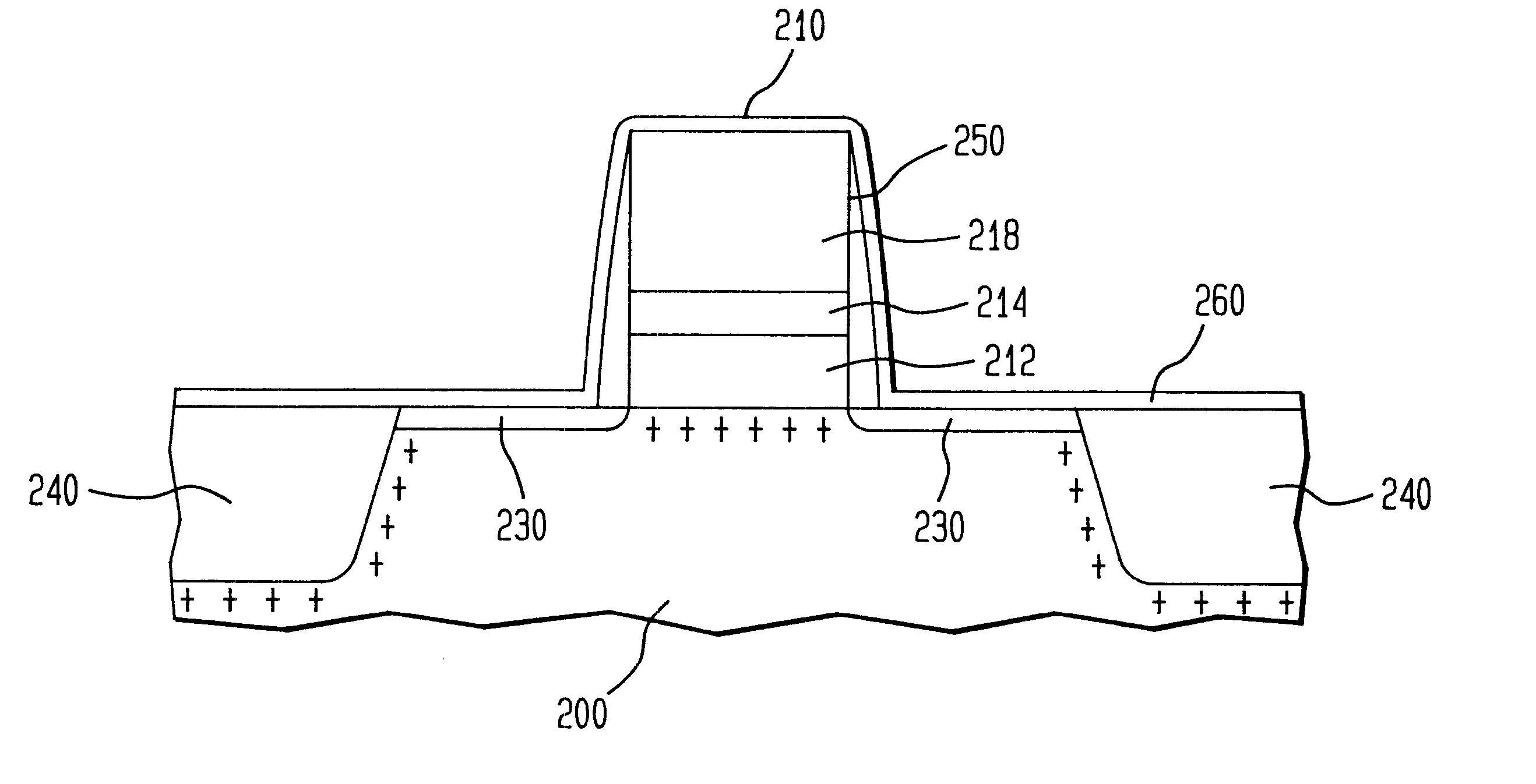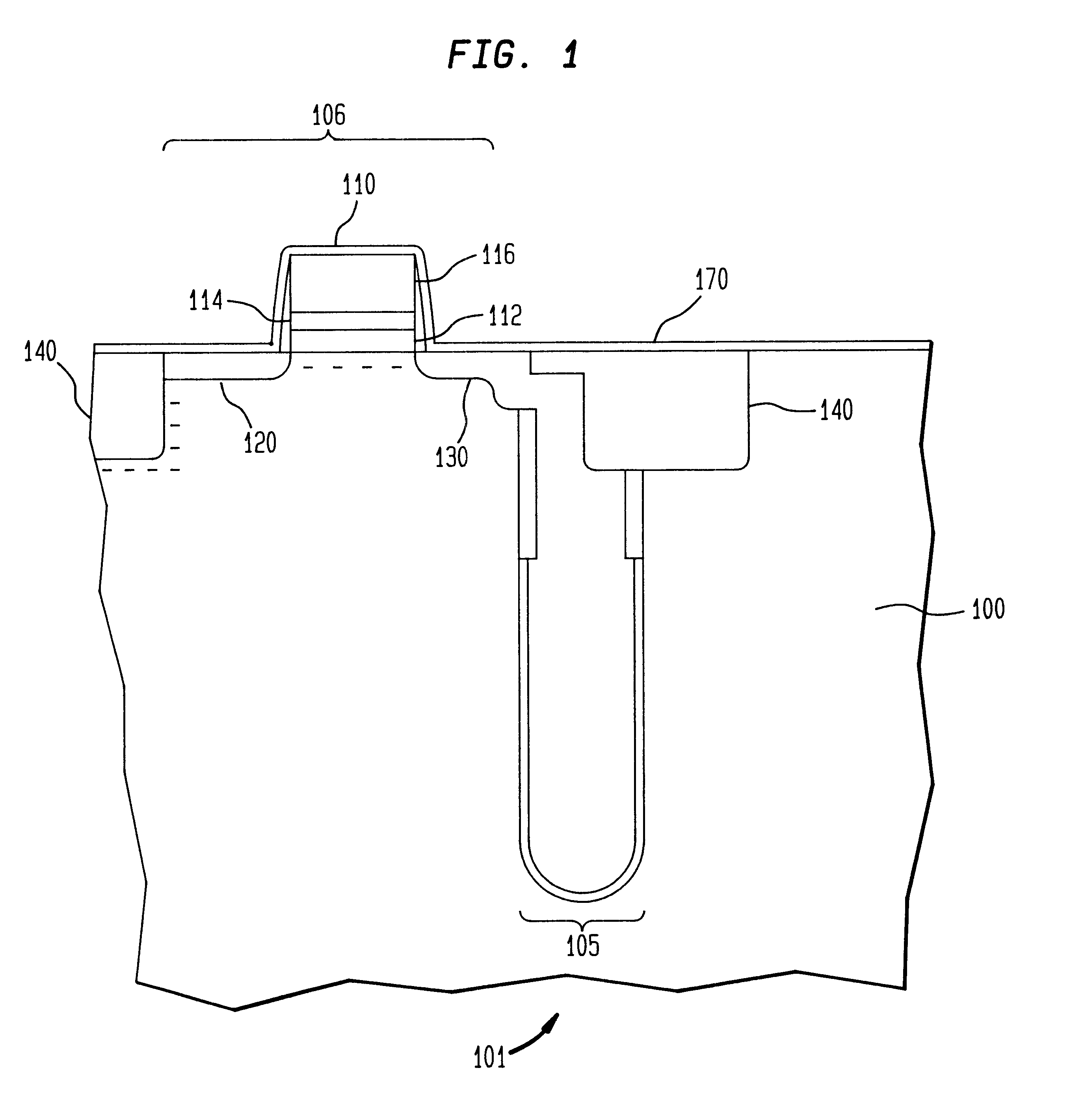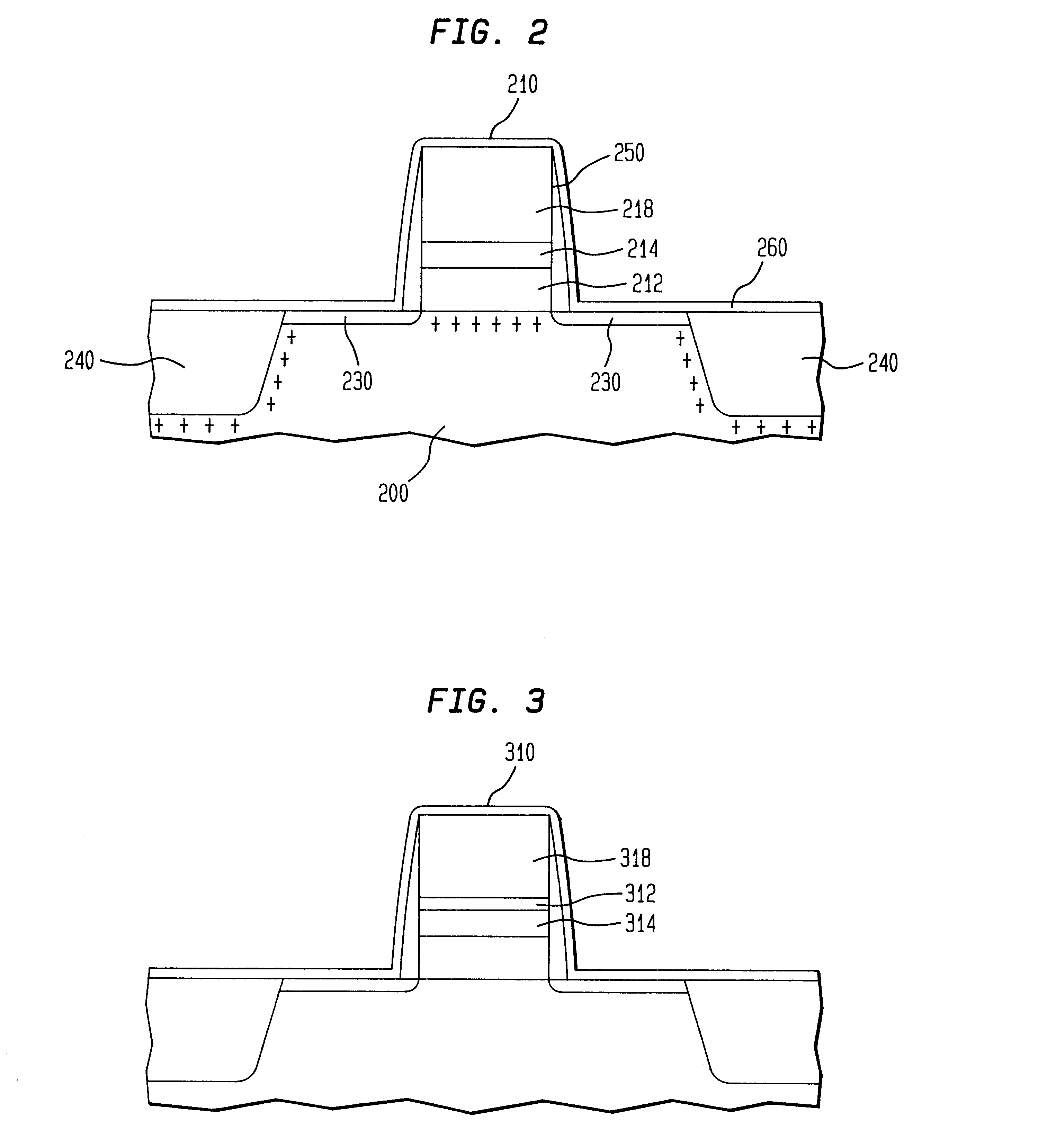Semiconductor device structure with hydrogen-rich layer for facilitating passivation of surface states
a technology of surface state and device structure, which is applied in the direction of semiconductor devices, semiconductor/solid-state device details, electrical apparatus, etc., can solve the problems of data retention, data retention, and device standby power consumption, and the effect of reducing the power consumption of the devi
- Summary
- Abstract
- Description
- Claims
- Application Information
AI Technical Summary
Problems solved by technology
Method used
Image
Examples
example 1
An experiment was conducted to compare leakage currents of devices incorporating the H-R silicon nitride layer against those with conventional silicon nitride layers. Eight lots (samples A-H) with devices fabricated thereon were prepared. The eight lots were processed in 2 different ways. Lots A-D comprise device structures fabricated with a conventional LPCVD silicon nitride layer to serve as a barrier or liner layer at the device interconnection interface. The device structures in lots A-D are similar to those described in FIG. 1. The conventional LPCVD silicon nitride film was deposited by reacting ammonia (NH.sub.3) with dichlorosilane (SiCl.sub.2 H.sub.2) in a furnace at about 720.degree. C. and 200 mTorr. The ratio of the NH.sub.3 to SiCl.sub.2 H.sub.2 is about 10:1. As for Lots E-H, the LPCVD nitride layer is replaced with an H-R silicon nitride layer, such as one described in FIG. 2. The H-R layer is deposited by PECVD in a reactor at about 480.degree. C., 5.75 Torr, and 340...
example 2
In FIG. 7, the characterization of PECVD H-R nitride films (samples A-C) was compared against that of an LPCVD nitride film. Sample A is a standard silicon nitride deposited by PECVD in a Novellus Concept-1 System. Sample B is a low SiH / UV PECVD nitride film deposited in a Novellus Concept-1 System. Both samples A and B were formed under similar conditions recommended by Novellus as described in "Users guide to 200 mm PECVD processing for the Novellus Concept One-200 mm Dielectric System" (published by Novellus Systems, Inc., of San Jose, Calif., 1992), which is herein incorporated by reference for all purposes. Sample C is an H-R silicon nitride film deposited by PECVD in an AME 5000 system from Applied Materials of Santa Clara, Calif. under similar conditions as the PECVD Film Lots (E-H) of Example 1. Sample D is a LPCVD nitride film deposited by LPCVD under similar conditions as the LPCVD film (Lots A-D) of Example 1.
After formation of the film, the samples were heated to 720.deg...
example 3
An experiment was conducted to analyze the relationship between SiH / (SiH+NH) and ND perimeter leakage using macros similar to those in the experiment of FIG. 5a-b. Data from the experiment are plotted in FIG. 8. As apparent from FIG. 8, lower concentrations of SiH / (SiH+NH) in the oxynitride film results in lower ND perimeter leakage. The ND leakage ranges from about 0.63 namp to about 1.72 namps for concentrations of SiH / (SiH+NH) ranging about 0-35%, respectively.
PUM
 Login to View More
Login to View More Abstract
Description
Claims
Application Information
 Login to View More
Login to View More - R&D
- Intellectual Property
- Life Sciences
- Materials
- Tech Scout
- Unparalleled Data Quality
- Higher Quality Content
- 60% Fewer Hallucinations
Browse by: Latest US Patents, China's latest patents, Technical Efficacy Thesaurus, Application Domain, Technology Topic, Popular Technical Reports.
© 2025 PatSnap. All rights reserved.Legal|Privacy policy|Modern Slavery Act Transparency Statement|Sitemap|About US| Contact US: help@patsnap.com



